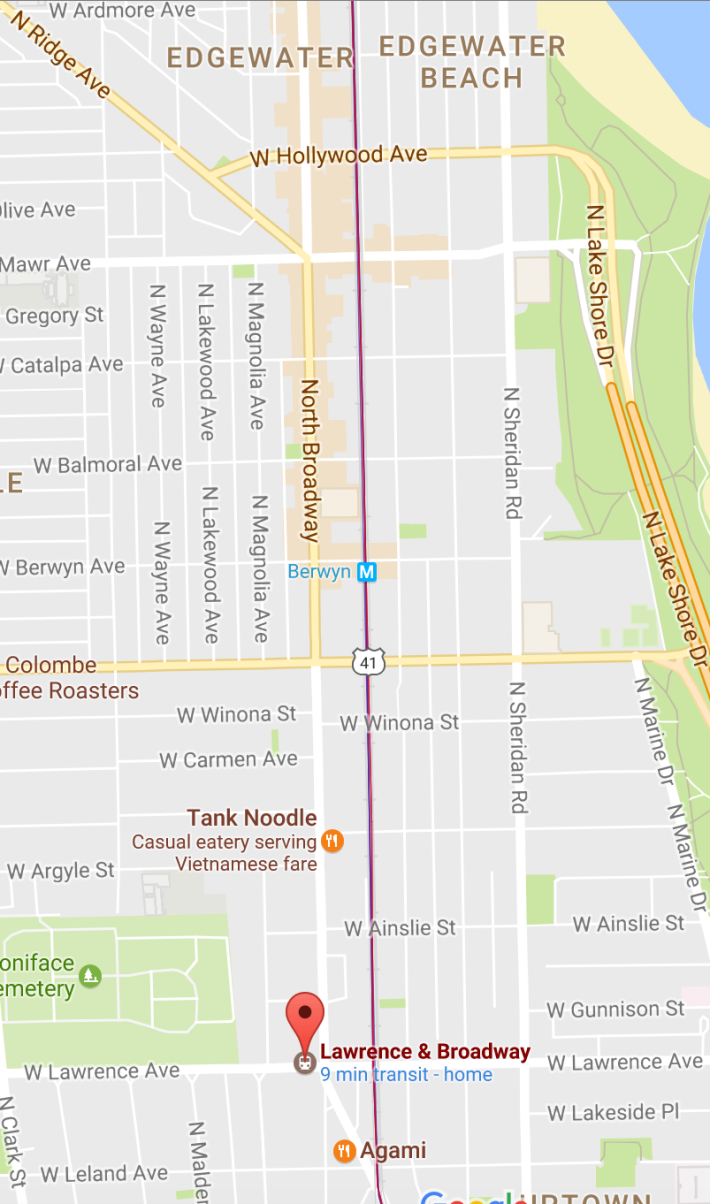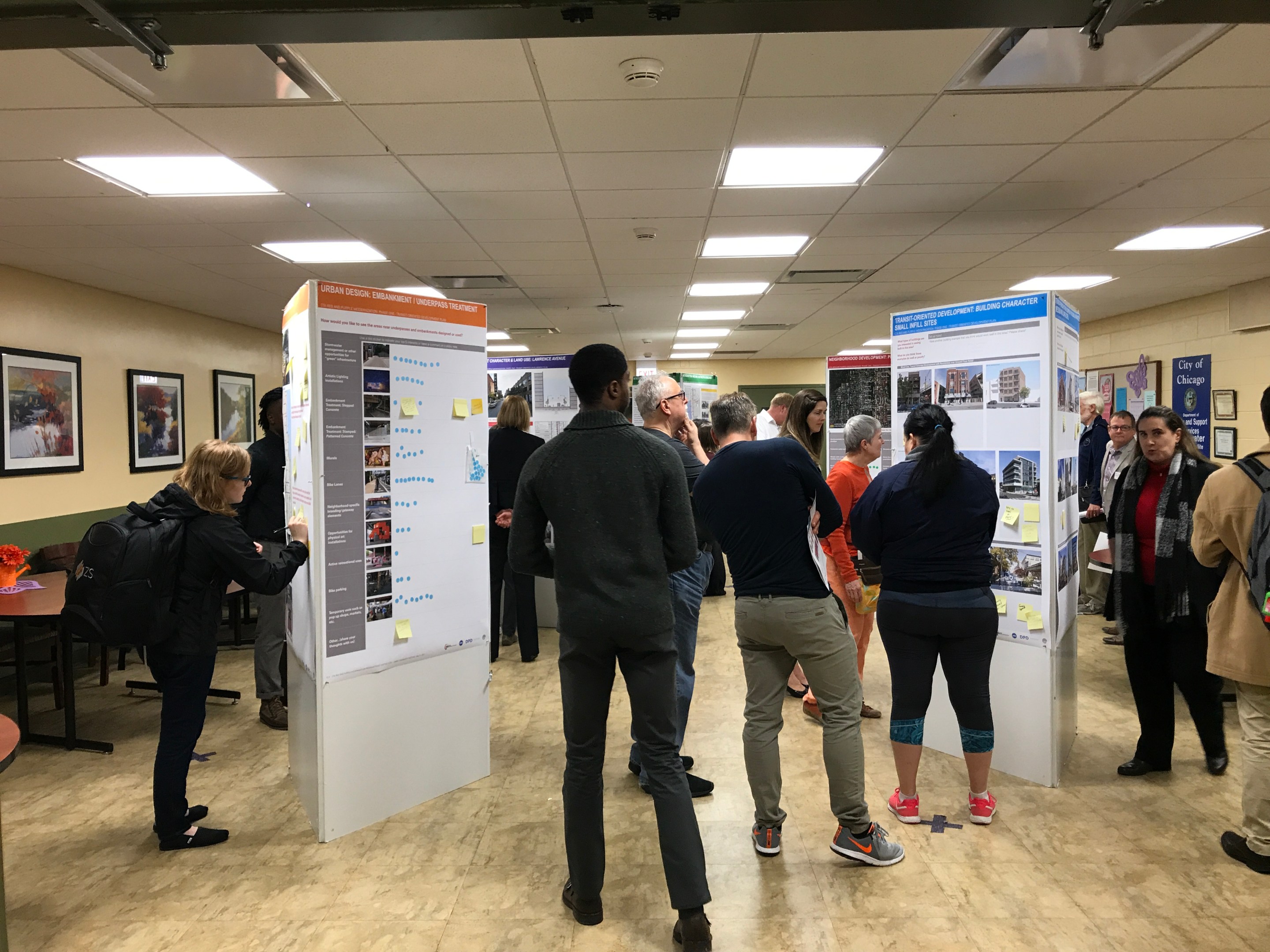Earlier this month at a public meeting on redeveloping the Belmont Flyover project area after the structure is built, nearby residents made it clear they feel that neighborhood character must be preserved. The same sentiment was present at last week’s hearing on potential transit-oriented development along the Red Line corridor between Lawrence and Bryn Mawr in Uptown and Edgewater, in conjunction with the CTA’s Red and Purple Modernization project.
However, instead of focusing on a desire for higher-end shops, restaurants, and housing, many neighbors along this corridor, which includes the Broadway retail strip, expressed strong support for building affordable housing for low-income and working-class residents, seniors, people with disabilities, and families. “Rent needs to be cheap,” said one attendee. “[You’re] not going to turn Broadway into Clark.”
Much like the Belmont flyover meeting, this session meeting was very open-ended, with CTA staffers asking attendees for general and specific feedback about what they want to see from the redevelopment, as well as providing useful info about existing, under construction, and proposed developments. The study area is confined to an area around the Broadway strip, generally defined by Leland, the alleyway between Magnolia and Broadway, Ardmore, and Winthrop. However, there are four bulges in the study zone, extending east from each ‘L’ stop to Sheridan Road.

Although the occupancy rate for storefronts along the Broadway corridor isn’t as robust as that in the area near the Belmont Red station, the numbers are still good, with 81 percent occupancy, and 80 percent of the businesses being locally owned. Compare to pedestrian-friendly central Lakeview, this more car-centric corridor has fewer restaurants and more emphasis on retail and professional/personal services.
At last week’s meeting, attendees were encouraged to leave round stickers on the display boards to “vote” for the kind of development they want to see, and Post-It notes for detailed comments. Judging from the stickers, the neighbors present strongly support building more of what already heavily populates the district, locally owned business and affordable family-oriented housing.
The placement of the dots also expressed a desire for more open space, since most of the existing parkland in the area is restricted to the lakefront. In addition, people were given an opportunity to weigh in on what should be done with space under the ‘L’ tracks, and many voiced support for creating a new bikeway there, noting that the land is already used as a walking and biking route. (There are currently buffered bike lanes on Broadway south of Foster.) Murals and outdoor markets were another popular idea.
As for the Post-It notes, only one commenter wanted to preserve an existing parking lot, whereas many others wanted new buildings with minimal or no parking. Crime was mentioned a major community issue, with some people going so far as to oppose new open space, arguing that it would be used for criminal activity. On a more positive note, there was much support on the Post-Its for affordable and family-oriented housing, with only a few notes in opposition.
When it came to TOD, the comments were similar to those at the central Lakeview meeting, with most people praising the existing vintage, mixed-use buildings while being wary of more modern designs. However, the comments did show people were open to the construction of glass-and-steel structures, but only if an effort iss made to integrate the new architecture with the old.

At the meeting, local resident Lee Herman told me he’s generally excited about the RPM project. He is especially looking forward to the stations getting elevators, since multiple members of his family have mobility issues. Herman added that promoting walkable, bikeable, and livable streets should be a top priority for any new development along the corridor – he praised the Argyle “shared street” project, completed last year, as an example of this approach. Lastly, he said he’s been very pleased with the public outreach done on RPM, which shows the CTA is serious about using public input to improve the project.
Melanie Eckner said she’s also excited about the stations being made wheelchair-friendly, since that is something the community has wanted for decades. Eckner added that she wants the designs of any new TOD buildings to be context-sensitive, maintaining a human scale and respecting existing architecture.
Ekner’s primary concern was the lack of family-oriented apartments in recent TOD projects, which have tended to focus on smaller units geared toward single people who don’t want to be dependent on driving. Shenoted that as many of today’s young people start families, they’re still going to want to live near transit, so we should prepare for that future demand by developing more multi-bedroom TOD housing now.
As for the height of these buildings, she said she’s fine with taller buildings, but feels that new density should be focused on areas near transit that are relatively non-dense, while smaller buildings might be appropriate for areas that already have high density. Going forward, she wants the CTA to conduct a larger number of smaller community meetings to get more accurate feedback from other residents.
CTA rep Irene Ferradaz told me it’s great that so many community members expressed support for building transit-friendly housing that will help keep the area affordable and diverse. However, she emphasized that the TOD plan is still very much in the concept phase, and more input will be collected at future meetings. Ferradaz encouraged people to leave feedback on the project website, since the transit agency wants to make sure that community voices are heard as the project is finalized.



